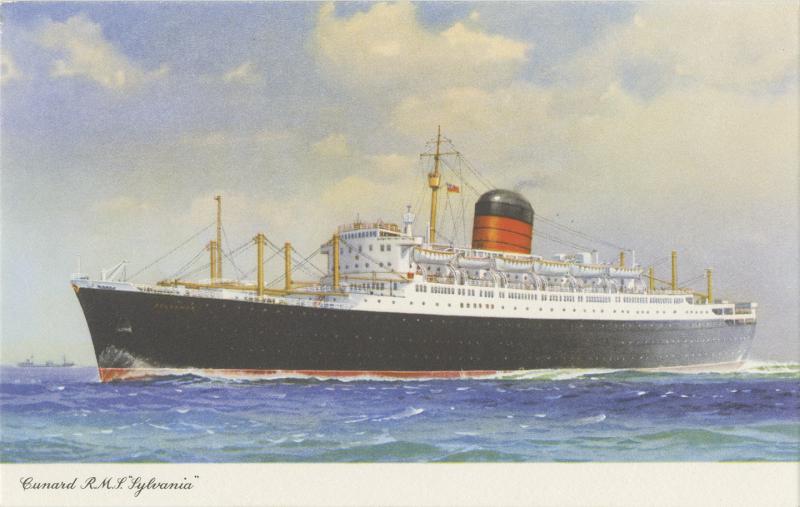

Postcard of Cunard Line’s “Sylvania” (between 1957 and 1968). OML Morse Collection.
EXHIBIT NAVIGATIONDuring the first half of the twentieth century, ocean liners were the primary means of passenger travel across the Atlantic between North America and Northern Europe. World War II disrupted transatlantic travel significantly: whereas over eighty liners were in service prior to the war, in its aftermath only forty remained in service and most were outdated. The ocean-liner industry recovered in the 1950s, but hopes of reviving its glory days were extinguished by new developments in aviation: in 1953, 38% of transatlantic passengers opted to fly, increasing rapidly to 69% by 1960 after the launch in 1958 of Boeing’s new B707 jet. While many travelers in the 1960s still preferred the familiarity and romance of the time-tested ocean liner, many more followed the zeitgeist ~ new ideas, new music, and new cultural trends ~ and increasingly opted for the convenience of air travel, thereby hastening the decline of the transatlantic ocean liner.
While the success of the ocean liner and the glamour of first-class accommodations during the industry’s heyday have been extensively documented, little account has been taken of the nature of ocean liner travel during the era of initial decline. This virtual exhibition therefore explores the experience and observations of then 21-year-old Judith McCarthy Robbins who, drawn by the romance of the ocean liner, chose to travel tourist class aboard the Cunard Line’s Sylvania to and from New York to Liverpool. This exhibition is based on Judith’s journal and the materials she collected during her time aboard the Sylvania from April 16th to 24th and from June 29th to July 5th, 1965, and is reflective of the feelings of dislocation and isolation commonly experienced by travelers as they crossed the ocean between the continents.
The illustrations in this virtual exhibition are drawn from Judith’s own collection of ephemeral objects from the Sylvania, one of the last ships commissioned by the Cunard Line. Judith’s materials are supplemented with some from OML’s Morse Collection, which round out the experience of an ocean liner crossing some fifty years ago.
Acknowledgements
The exhibition was researched and prepared by Matthew O. Carter, a History and Classics Major at the University of Southern Maine (B.A. 2014), with the assistance from Prof. Matthew Edney, Osher Professor in the History of Cartography, and Yolanda Theunissen. We hope you enjoy this illustrated journey that would not have been possible without the generosity of Judith McCarthy Robbins.
Published February 2014